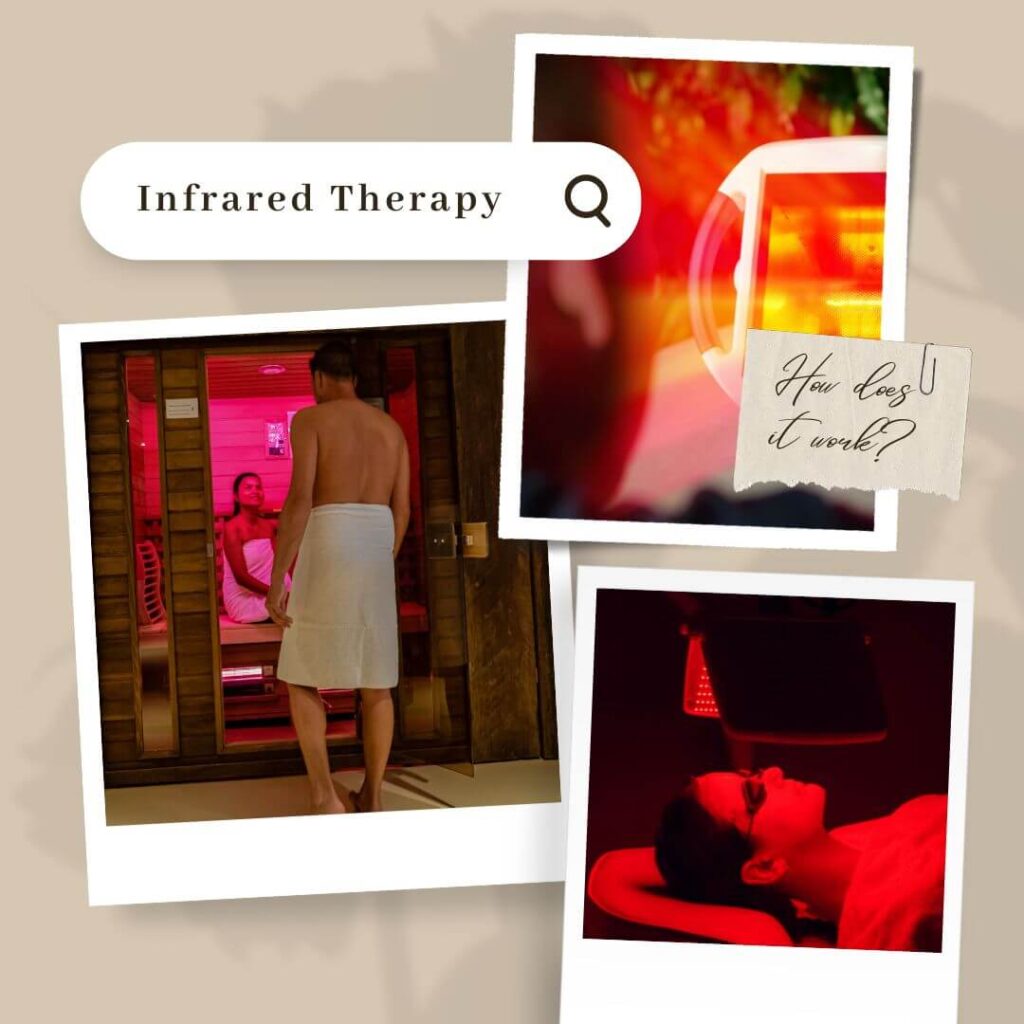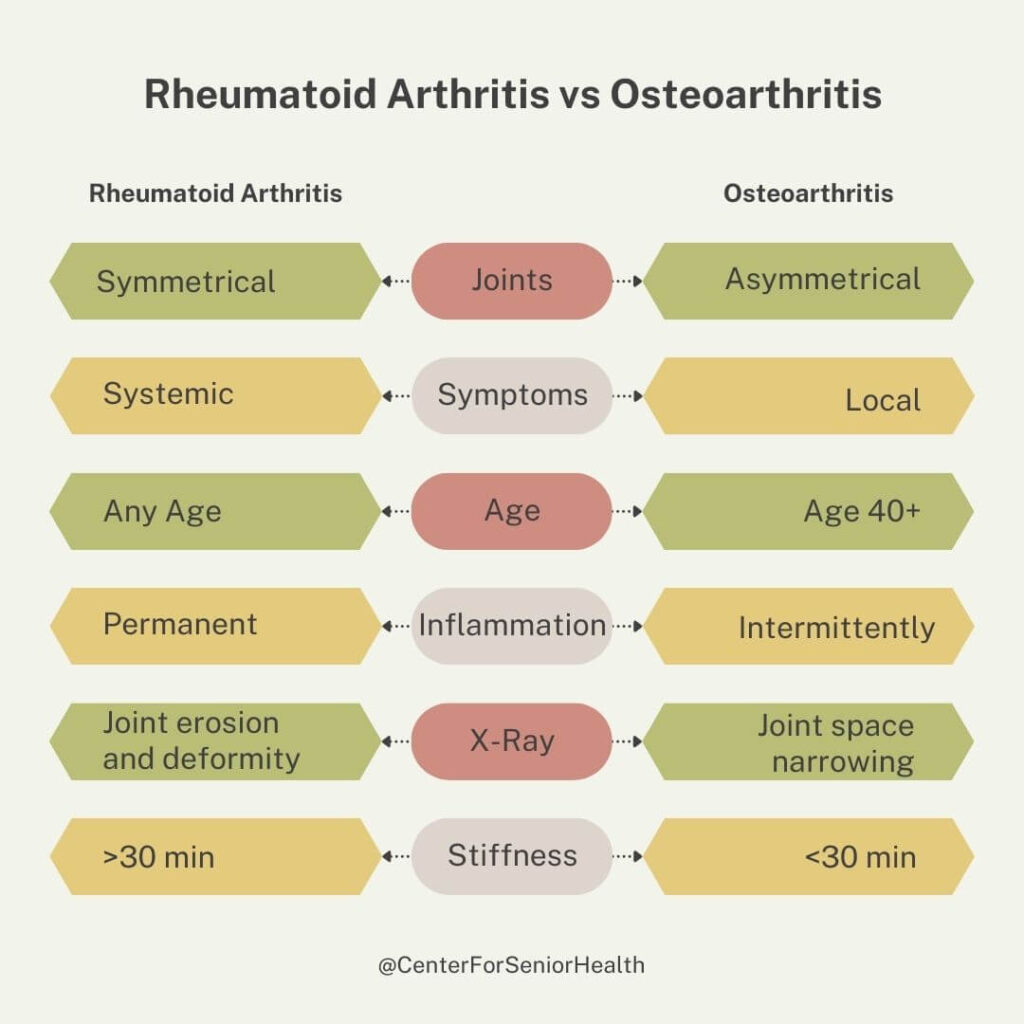Want to know what this infrared therapy buzz is all about?
Infrared therapy is like a non-invasive spa treatment for your insides. It utilizes specific wavelengths of infrared light that go deeper into your tissue than regular red light which makes the therapy interesting for a wider range of applications.
Infrared Therapy: What Is It?

Infrared therapy, red light therapy, light therapy, low-level laser therapy, photobiomodulation, phototherapy & more. There are a lot of different names for light therapy out there, and without understanding the effects of different wavelengths of light, it can be really difficult to understand what type of light is best for your goals.
Light therapy uses visible light in the spectrum between 400 – 480nm and is used to help with cognitive abilities. The therapy is often administered through a “light box”. The therapy helps to improve our mood, help with the regulation of sleep patterns and increase cognitive performance by creating a change in the levels of chemicals in our body.
Red light therapy uses visible light in the spectrum of 630 – 700nm and is primarily used for skin health. Red light can only reach the surface of our skin, and thus helps with skin rejuvenation and acne treatment.
Infrared therapy: Because infrared light can be separated into Near-Infrared light (NIR) and Far-Infrared light (FIR), this is where a lot of people get confused. NIR is invisible light in the spectrum of 700 – 1,200nm and FIR is invisible light in the spectrum of 3,000 – 100,000nm.
NIR and FIR stimulate different biological processes in our bodies. Technically, the term infrared therapy can be used for all forms of light therapy on the infrared spectrum. However, it is most commonly used for Far-Infrared light therapy in the form of infrared saunas.
Far Infrared vs Near Infrared Therapy
Generally speaking, the longer the wavelengths, the deeper the light can penetrate into our tissue. However, at different wavelengths, our body reacts differently to the light.
The mitochondria in our cells are able to absorb the energy of near-infrared light to produce adenosine triphosphate (ATP) which is cellular energy that stimulates different biological processes in our body that promote healing.
Light in the far-infrared spectrum ran reach even deeper into our tissue. However, at this wavelength, the molecules in our cells start to vibrate, our body produces heat and drives up our body temperature. This thermal stress can be harmful if our body is exposed to it for too long. However, in short intervals, it can have a beneficial cleansing effect.
As you can see, not all infrared light is created equal. Both NIR and FIR can have beneficial effects on our health, but they work very differently.
Because both red light and near-infrared light do not have any negative side effects, they are often paired together for energetic effects and are most commonly referred to as red light therapy. However, beware that not all red light therapy devices use the NIR wavelengths.
Infrared saunas use FIR wavelengths to heat our bodies from within, which can help with pain relief and has a cleansing effect. However, if used in excess it can cause thermal damage to our cells. It is recommended to speak with a doctor before treatment.
Near-Infrared Therapy: How does it work?
Many athletes swear by infrared therapy as their secret weapon for muscle recovery. The deep penetration of near-infrared light can help relax muscles, alleviate stiffness, and promote faster healing after intense workouts or injuries.
Unlike other forms of light, such as ultraviolet rays, which can be harmful to our bodies, near-infrared light is completely safe and has been used for various healing purposes for decades.
When we expose our bodies to near-infrared light during therapy sessions, the energy from the light is absorbed by our cells, strengthening our cellular metabolism.
When cells receive a boost of energy, they become more efficient at repairing themselves. This can be particularly beneficial for individuals recovering from injuries or surgery. By supporting the body’s inherent regenerative abilities, infrared therapy helps expedite the healing process and even reduce scar tissue formation.
This increase in cellular activity also stimulates blood flow, bringing a host of benefits to our tissues. As blood circulation increases, more oxygen and nutrients are delivered to tissues throughout the body, and toxins, metabolic byproducts and other waste products are removed quicker. Improved blood flow not only supports overall health but also aids in the healing process. This cleansing effect contributes to improved tissue function and vitality.
The heat generated by near-infrared therapy provides additional benefits beyond enhanced circulation. It can help relax muscles and provide relief from discomfort.
Health Benefits of Near-Infrared Therapy
Infrared therapy has been found to provide relief for individuals suffering from chronic pain conditions such as arthritis, fibromyalgia or chondromalacia.
Research suggests that infrared therapy can effectively target and soothe painful joints and muscles.
Infrared therapy also offers benefits for skin health. Regular use of infrared therapy can give your complexion a natural glow and leave your skin looking refreshed and rejuvenated.
Finally, some people experience reduced stress levels. The gentle heat helps relax both the body and mind, creating a calming effect.
Learn more about the pros and cons of near-infrared therapy in our in our comparison.
Far-Infrared Therapy: How does it work?
The idea behind FIR is the concept of hormesis, which means that for every toxic stimulus, a lower dose of the same stimulus is actually beneficial.
The long wavelengths of far-Infrared therapy work induce thermal stress on our bodies. We start to sweat, and a lot of toxins and waste products are flushed out of our bodies, leading to a detoxification effect.
This stress also increases our heart rate and activates the so-called heat shock factors (HSFs) and heat shock proteins (HSPs). These protective responses lead to health benefits in the cardiovascular system, brain & muscle function as well as improvement in exercise capacity.
Health Benefits of Far-Infrared Therapy
Improving Heart Health: A major benefit of using far-infrared therapy is its positive impact on heart health. When exposed to infrared light, the body produces more nitric oxide, an important molecule that helps keep blood vessels healthy. This molecule relaxes arteries, prevents blood from clotting in vessels, and maintains proper blood flow. Additionally, it fights harmful molecules called free radicals, which cause stress and helps control blood pressure.
Detoxification for Wellness: Far infrared light can aid in detoxification, which is important for strengthening the immune system and improving digestion. Infrared saunas raise the body’s core temperature, promoting cellular-level detoxification and enhancing overall health.
Relief of pain and inflammation: With improved heart rate and better circulation, far infrared light helps reduce pain and inflammation.
Potential Cancer Treatment: Far-infrared therapy might have potential as a cancer treatment. Studies suggest that when exposed to infrared radiation, nanoparticles become toxic to nearby cancer cells, offering a potential avenue for cancer treatment. Photoimmunotherapy, a method that uses a specialized antibody-photoabsorber combination to target and destroy cancer cells, shows promise in this field.
Infrared Therapy vs Red Light Therapy
Understanding the Difference Between Infrared Light and Red Light
As we have just explained, red light and and infrared light are different wavelengths of light that stimulate different processes in our body. This is because of different penetration levels.
Near-infrared light can penetrate deeper into the body, reaching tissues, muscles, and even bones. This deep penetration makes it ideal for therapeutic purposes such as pain relief, muscle recovery, and wound healing.
Far-infrared light can penetrate even deeper into our tissues and even organs. Because of it’s thermal effects, far infrared therapy is most beneficial for detoxification and sports recovery.
Red light therapy on the other hand primarily targets the surface layers of the skin. It stimulates cellular activity in these superficial layers, promoting collagen production and enhancing skin health. While red light therapy may not reach as deeply as infrared therapy, it still offers numerous benefits for skin care concerns like acne, wrinkles, and inflammation.
It’s important to note that red light therapy and near infrared therapy are often used interchangeably in discussions due to their overlapping benefits. Despite their differences in wavelength and depth of penetration, both therapies harness the power of photobiomodulation – a process where specific wavelengths of light interact with cells to stimulate various biological responses.
Whether you opt for red or infrared therapy depends on your specific needs. For instance, if you’re seeking relief from chronic pain or muscle soreness after an intense workout session, infrared therapy might be your best bet due to its ability to reach deeper tissues.
On the other hand, if you’re looking to improve your skin’s appearance or address dermatological concerns like acne or eczema, red light therapy can work wonders on the surface layers of your skin.
Infrared Therapy: Effectiveness and Risks
If you have pre-existing medical conditions such as cardiovascular disease or diabetes, it is advisable to consult with a healthcare professional before starting infrared therapy. They can evaluate your specific situation and provide guidance on whether this form of treatment is suitable for you.
Similarly, if you are pregnant or think you might be pregnant, it is essential to seek medical advice before undergoing infrared therapy. While there isn’t substantial evidence suggesting harm to pregnant women from infrared light exposure during short sessions at moderate temperatures, it’s always best to err on the side of caution and consult with your healthcare provider.
Potential Risks of Overexposure
Overexposure to far-infrared light can lead to burns or skin damage. It’s crucial to follow recommended guidelines regarding session duration and temperature settings provided by the manufacturer or therapist. Excessive exposure may cause discomfort or injury, so it’s important not to exceed the recommended time limits for each session.
If you experience any adverse reactions or persistent discomfort during or after an infrared therapy session, you should discontinue the treatment and consult with a healthcare professional.
Conclusion
So there you have it, a comprehensive look at infrared therapy and its numerous health benefits. From relieving pain and inflammation to detoxification and improving circulation, infrared therapy has shown promising results in various studies. Whether you’re dealing with muscle soreness, arthritis, or even skin conditions like psoriasis, incorporating infrared therapy into your wellness routine may provide the relief you’ve been searching for.
FAQs
Can I use infrared therapy if I have sensitive skin?
If you have sensitive skin, it’s recommended to start with shorter sessions of infrared therapy and gradually increase the duration as your skin adjusts.
How often should I use infrared therapy?
The frequency of infrared therapy sessions can vary depending on individual needs and goals. However, starting with 2-3 sessions per week is generally recommended. As you become more accustomed to the treatment, you can adjust the frequency accordingly.
Is it safe to use at-home infrared therapy devices?
Yes, at-home infrared therapy devices are generally safe when used correctly. However, it’s important to carefully read and follow the instructions provided by the manufacturer. If you have any concerns or underlying health conditions, consult with a healthcare professional before using these devices.
How soon can I expect to see results from infrared therapy?
The timeline for experiencing results from infrared therapy can vary depending on the individual and the specific condition being treated. Some people may notice improvements after just a few sessions, while others may require several weeks of consistent treatment. Patience and consistency are key.
References
https://www.liebertpub.com/doi/10.1089/photob.2022.0078
https://www.ncbi.nlm.nih.gov/pmc/articles/PMC3699878/
https://www.news-medical.net/health/Infrared-Therapy-Health-Benefits-and-Risks.aspx
https://link.springer.com/article/10.1186/s40064-015-1093-5
https://pubmed.ncbi.nlm.nih.gov/12088716/
https://www.ncbi.nlm.nih.gov/pmc/articles/PMC9980499
https://www.cancer.gov/about-cancer/treatment/types/photoimmunotherapy-video
You May Also Like
- Best Red Light Therapy Device 2024 for Pain Management – 16 October 2024
- How To Improve Gut Microbiome – 26 May 2024
- Chemo neuropathy treatment: What to do? – 19 May 2024








